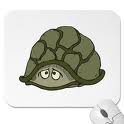26 : Constructive Conflict :
Part 2 of 3 - Managing Yourself in Conflict
The previous Article (25 : Constructive Conflict-Part 1 : Understanding Conflict) triggered more responses from you than any previous newsletter – responses that indicated both how prevalent conflict is in both our personal and working lives and how difficult and disturbing people find it.
However, understanding the dynamics of conflict is only part of it. If we are to become more skilful in managing it we also need to understand ourselves (and others). We do not all have the same relationship to conflict.
Click here to access a questionnaire that indicates whether you are a Turtle, a Fox, a Shark, a Teddy Bear or an Owl. I did not create this questionnaire and have had it for years so can’t attribute it I’m afraid. (If for any reason ‘click’ doesn’t work, the full web address is at the end of the newsletter).
 Are you mostly a Turtle? Do you tend to avoid conflict at all costs? In which case, what is the cost? What price do you pay for this (habitual) avoidance? What doesn’t get dealt with or sorted out? Do things tend to get better or worse?
Are you mostly a Turtle? Do you tend to avoid conflict at all costs? In which case, what is the cost? What price do you pay for this (habitual) avoidance? What doesn’t get dealt with or sorted out? Do things tend to get better or worse?
 Or are you more of a Teddy Bear? (This is a very common style for women who are socialised to take responsibility for looking after relationships and other people’s feelings – but there are male teddy bears too). Do you feel that prioritising other people’s needs/feelings over your own (habitually) indicates that you are a ‘nice person’ (‘the angel in the house’)? Is it really kind to withhold information from people about how not getting your own needs/goals met impacts you? What feelings are you left with? Can it lead to resentment and/or repressed anger and, if so, what are the longer-term impacts on your relationship with others? Can angels turn into martyrs?
Or are you more of a Teddy Bear? (This is a very common style for women who are socialised to take responsibility for looking after relationships and other people’s feelings – but there are male teddy bears too). Do you feel that prioritising other people’s needs/feelings over your own (habitually) indicates that you are a ‘nice person’ (‘the angel in the house’)? Is it really kind to withhold information from people about how not getting your own needs/goals met impacts you? What feelings are you left with? Can it lead to resentment and/or repressed anger and, if so, what are the longer-term impacts on your relationship with others? Can angels turn into martyrs?
 Very few people like to think that they can ever behave like Sharks. But it is not uncommon for Turtles and Teddy Bears to suddenly snap – in more than one sense of the word.
Very few people like to think that they can ever behave like Sharks. But it is not uncommon for Turtles and Teddy Bears to suddenly snap – in more than one sense of the word.
 The Owl style is described as ‘confronting’ in this model and we tend to use the word ‘confrontational’ in a negative way. However, what it means is ‘dealing with’, being direct, not avoiding. You may or may not manage to find a ‘win-win’ solution in a conflict situation. But you are much more likely to if you start with the belief that one is possible.
The Owl style is described as ‘confronting’ in this model and we tend to use the word ‘confrontational’ in a negative way. However, what it means is ‘dealing with’, being direct, not avoiding. You may or may not manage to find a ‘win-win’ solution in a conflict situation. But you are much more likely to if you start with the belief that one is possible.
Questions
Think about current or recent situations where you have either been in conflict with someone or there has been the potential for there to be conflict (even if you avoided it).
In each case, which ‘style’ most fits the way you engaged, or are engaging, with the situation?
What do you see as the advantages/disadvantages of this style in terms of :
a) achieving a constructive resolution of the situation?
b) how you feel about the other person?
c) how you feel about yourself?
For each of the other styles, imagine how you might behave differently if you adopted that style instead. What would your replies to a), b) and c) above then be? If you identify changes you would like to make in your behaviour, what do you need to support you in making them.
Next time I will look at some of the skills that will help you to communicate more effectively in conflict situations.
If you would like to receive future articles via email, please use the Contact the Coach form and change the Subject to 'Please Subscribe'. Your email address will not be used for any other purpose or given to anyone else.

